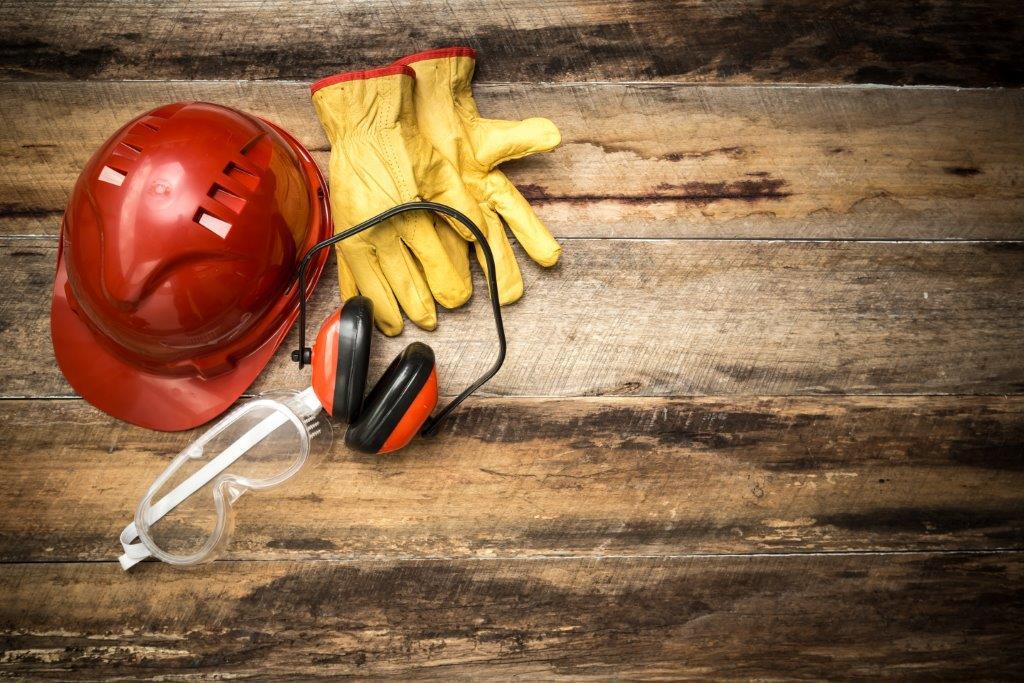
New standards, safety gear help workers take a stand against injuries
By Chris Maday Schmidt
It goes without saying that the number one priority for superintendents is the safety of their crews and subcontractors. And that the number one goal is 100 percent zero incidents so that every worker goes home, unscathed, at the end of each day.
Nearly 6.5 million people work at approximately 252,000 construction sites across the nation on any given day, according to OSHA. And, when compared to all industries, the fatal injury rate for the construction industry is higher than the national average in this category. In fact, OSHA recently issued a final standard that will prevent 29 fatalities and more than 5,842 injuries annually. The rule became effective on Jan. 17; its most significant update is allowing employers to select the fall protection system that works best for them, choosing from a range of accepted options including personal fall protection systems. Other changes noted include:
- Allowing employers to use rope descent systems up to 300 feet above a lower level
- Prohibiting the use of body belts as part of a personal fall arrest system
- Requiring worker training on personal fall protection systems and fall equipment
Be sure to check out OSHA’s recent release of its Recommended Practices for Safety and Health Programs in Construction https://www.osha.gov/shpguidelines/docs/8524_OSHA_Construction_Guidelines_R4.pdf. This document outlines a proactive approach to identify and eliminate different types of hazards before they cause injury or illness.
New safety products in the field
Construction Superintendent recently caught up with two companies to get the skinny on new and/or innovative safety equipment they’ve recently adopted for use by their crews on jobsites.
According to Charles Johnson, Turner Construction Company’s director of environmental, health and safety, “Within the last year, we’ve replaced all lanyard harnesses with dual retractable reels that workers can carry on their back. The new fall protection gear is not only less cumbersome and easier to use, but it’s also safer. Before unhooking, you can hook up to the second tie-off, minimizing the risk of tripping and allowing for more movement.”
The benefit, Johnson says, is that, “Overall, the equipment reduces the risk of hazard. If someone begins to fall, the product stops you within 18-24 inches. The old lanyard harnesses didn’t stop until you had fallen six feet.”
Pertaining to product selection, adoption, etc., Johnson says, “When we realized there was room for improvement in terms of fall protection gear, we pulled our team together to evaluate what products were out there. It’s important to have something that can handle the abuse that equipment takes on a construction site. In the end, we chose the dual retractable reels for their best all-around value and serviceability.”
Agreement from everyone on the jobsite who will be affected is key to a successful implementation of any new equipment. Consequently, Johnson says that “It was important to have buy-in from our team, so we involved our superintendents and project managers, in addition to our safety and operations groups, in the decision. Together we discussed the possible options and asked everyone to research and select specific equipment they liked and had seen in the field.”
As far as special training for the correct use of the new equipment, Johnson says, “The manufacturer came out and trained our supervisors on the new fall protection equipment. From there, our supervisors trained the rest of the team. We’ve seen great follow through on everyone’s part.”
In another study of U.S. workplace injuries, the American Journal of Preventive Medicine reported that the construction industry had the highest number of traumatic brain injuries on the job1. General contractor Clark Construction Group, LLC, decided to analyze ways to reduce or even prevent head injuries beyond the scope of a traditional hardhat—whether a worker is struck by an object from above, or if a worker falls.
Ben Lord, a construction executive with 15 years of field supervision experience with Clark Construction Group, says that “a chin strap quickly emerged as an obvious contender.” He explained that while “chinstraps in the industry are common in both China and Europe, American hardhat design has not significantly changed for the past 50 years.” He further states that, “Clark’s safety department… investigated several manufacturers’ models, two of which were eventually given field trials by laborers and superintendents around the country for two months in 2016.”
According to Lord, after numerous tests, trials and discussions, the team agreed a particular helmet “was the right choice because of its Class E electrical rating (required on EM-385 projects), comfort and its excellent impact test results. Overall, the new helmet has been well received and the company is currently rolling it out to all employees with 100 percent use by April 1.”
The bottom line? In order to take a stand against injuries and fatalities on the jobsite, superintendents must provide their crews with proper protective gear, apparel and training, as well as be well versed about the industry standards pertaining to safety in the field. Check out the safety resources below for more info.
Go-to safety resources
- OSHA’s construction standards and resources: https://www.osha.gov/SLTC/fallprotection/construction.html.
- Recommended Practices for Safety and Health Programs in Construction: https://www.osha.gov/shpguidelines/docs/8524_OSHA_Construction_Guidelines_R4.pdf.
- Construction safety & health: https://www.cdc.gov/niosh/construction/default.html.
- National Campaign to Prevent Falls in Construction 2017 Safety Stand-Down: https://www.osha.gov/StopFallsStandDown/.
1http://www.bisociety.org/despite-hardhats-traumatic-brain-injuries-still-common-construction-sites/ (accessed February 16, 2017).


 Join our thriving community of 70,000+ superintendents and trade professionals on LinkedIn!
Join our thriving community of 70,000+ superintendents and trade professionals on LinkedIn! Search our job board for your next opportunity, or post an opening within your company.
Search our job board for your next opportunity, or post an opening within your company. Subscribe to our monthly
Construction Superintendent eNewsletter and stay current.
Subscribe to our monthly
Construction Superintendent eNewsletter and stay current.